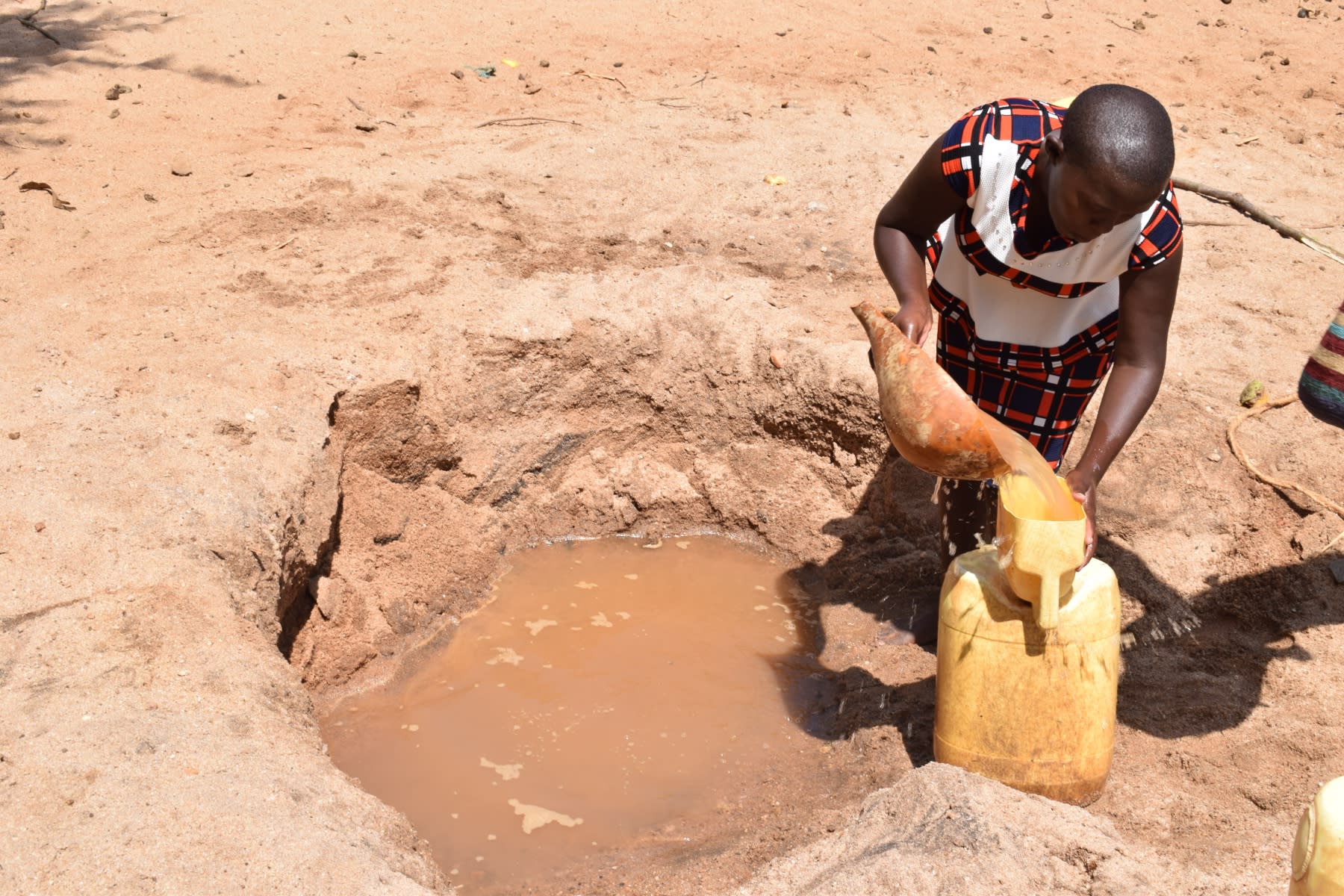There is a rainwater tank and piped water at Muunguu Primary School. But both sources are unreliable. The tank is far too small for the student population - running dry after only a few months. And the piped water is so inconsistent that it is virtually useless. It shuts down entirely during the driest times of the year.
Students and staff must turn to other, unsafe sources of water to make up for the shortage. As a result, rampant cases of waterborne diseases are contracted by the students. The resulting treatment costs are expensive and the students lose valuable time learning.
These open, dirty water sources most often look like this:

Many riverbeds here in Kitui County are sandy for the majority of the year, but if you dig down you'll find some water.
The water shortage contributes to a lower level of sanitation at the school. Handwashing is not an option without water and the latrines are rarely cleaned, if at all, due to the lack of water.
"The existence of water problems in this school has greatly contributed to low levels of hygiene and sanitation. Our students seldom wash their hands," Headteacher Hamina Mwendwa told us.
The day school that was pioneered by the local members in 1979 with a goal to serve and educate the children of Muunguu village. It was first sponsored by Africa Brotherhood Church after which it was taken up by the District Education Board. It currently has no sponsor, so it's supported primarily by the parents and the government-backed Constituency Development Fund.
What we can do:
Training
Students and staff will be trained for one day. Those in attendance will form a school health club that will promote good hygiene and sanitation practices both at school and at home. They will learn all of the steps to proper handwashing, how to treat water, and how to keep their environment clean. The school will also be taught how to best oversee and maintain their new rainwater catchment tank and handwashing stations.
Handwashing Stations
Three handwashing stations will be delivered at the project’s completion. These are 1,000-liter plastic tanks fitted with four taps. The health club and school management will be responsible for making sure tanks are filled with water and that a cleaning agent such as soap or ash is available.
Rainwater Catchment Tank
We will build a 104,000-liter rainwater catchment tank for this school. This water will benefit the students, teachers, and supplementary staff. Parents will mobilize the materials needed for construction, such as sand and stone. They will also lend some strong arms to help with the actual construction.
The huge capacity of this tank makes the others look tiny in comparison; 104,000 liters should be enough water to carry students and staff through the entire dry season. As soon as the tank has time to cure, it can begin to collect rainwater for drinking, cooking, and cleaning!

 Rainwater Catchment
Rainwater Catchment
 Rehabilitation Project
Rehabilitation Project






























